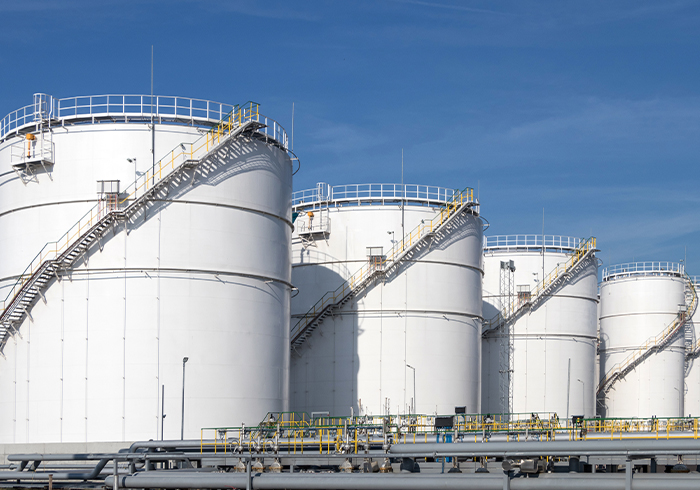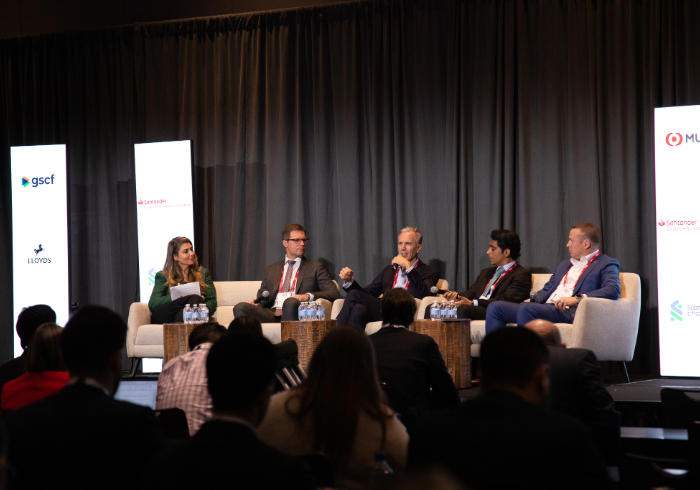Although great strides have been made in digitising pockets of trade, the challenge of enabling data flow among stakeholders – from businesses to financiers and government agencies – is holding back progress. Eleanor Wragg reports on efforts to solve for this disconnect.
Every day, along the strings of supply chains that crisscross the globe, a vast wealth of data is being generated at a near-unfathomable pace.
From the internet of things-enabled real-time tracking of goods in transit to the product, supplier and buyer information held in enterprise resource planning (ERP) systems, sustainability data such as carbon emissions and material provenance, and the 5,000 data fields exchanged by parties to each documentary trade transaction, data sources in trade are as diverse as they are abundant.
Within this torrent of information are insights that could reshape industries, boost the availability of finance, lower the barriers to access to trade and ensure it contributes to – rather than detracts from – the transition to a more sustainable world. However, all too often, the true value of all this data lies dormant, locked away in isolated systems and siloed processes.
From digitisation to digitalisation
Recent years have seen numerous efforts to digitise the largely paper-based world of trade. From the letter of credit to the bill of lading and beyond, solutions now abound to make cumbersome trade processes faster, less error-prone and more efficient.
However, because these tools largely replicate traditional processes electronically, they often do little to streamline information flow across the ecosystem.
Instead, they have become yet another example of an isolated repository of trade data; data that could be used for decision-making processes like trade finance lending and customs clearance – if only banks, government authorities and other stakeholders could both access and trust it.
What’s more, without end-to-end connectivity, corporates increasingly find themselves in a two-track environment, duplicating electronic and paper-based documents to meet the requirements of various counterparties, according to the Digital Standards Initiative’s Trusted Technology Environments (TTE) working group.
“This conserves breakpoints in cross-company process flows, which have long been and are still being bridged by exchanging paper documentation,” the group says in a recent report, titled Trust in Trade, which calls for work to go beyond the mere digitisation of paper to the full digitalisation of the entire trade ecosystem.
“Trade digitisation leaves the biggest portion of the digital dividends untapped by ignoring most of digitalisation’s change potential,” the report says, adding that transitioning from manual, duplicative processes to automatic data feeds would not only streamline operations but also unlock substantial value.
Trust is a must
But not all data is created equal. Because data comes from numerous sources in many different formats and standards, it can often be contradictory. In this tangle of mismatching information, truth is relative rather than absolute. Since the risk to banks and counterparties to trade transactions of relying on incorrect information can be measured in the millions of dollars, stakeholders need to be confident that they have the correct version of a piece of information, with clarity on who owns it, who logged it, and what the evidence of each data point is.
The solution, according to the TTE working group, lies in building a layer of trust that underpins the existing data supply chain, ensuring its reliability, transparency and security and enabling all stakeholders to operate on the same state of information.
Recent technological advances have made this concept a possibility. Tools such as digital certificates, verifiable credentials, smart contracts and blockchain networks can be used to create an unchangeable history of authenticated data that is accessible by authorised stakeholders along the supply chain. This structured data can also be sent to and received from downstream applications in real time via APIs.
“We call this fully digitalised structured trade data conveyance and processing system a data supply chain,” says the TTE working group.
The end goal – a global distributed network of trust for trade – is more a utopian ideal than a practicable possibility, at least for now. Nonetheless, a growing number of projects around the world are helping to bring this vision ever closer to reality.
Bringing logistics data into the financial supply chain
The most obvious win from connecting trusted data sources across sectors is the ability to channel more trade finance to areas that are currently underserved, such as small and medium enterprises (SMEs). Despite accounting for 50% of global trade, these small firms only receive 10% of lending, due in large part to perceived high risk and a lack of comprehensive credit history.
Before extending trade and supply chain finance, banks need to understand a client’s working capital cycle, trade activities and counterparties. This demands a cascade of paper documents – bills of lading, purchase orders, invoices, contracts and more – many of which are a challenge for borrowers to produce.
However, the data that financiers need already exists, tucked away along the physical supply chain, and new initiatives are emerging that seek to unleash its potential.
With 60 terminals across six continents, logistics giant DP World, which handles over 10% of the world’s container traffic, has a wealth of real-time information on the goods passing through its network – much of which could support credit decision-making.
In 2021, it launched DP World Trade Finance, a platform that connects shippers to financiers. On the platform, DP World provides financiers with data on shippers’ cargo movements and supply chain activities, enabling them to extend credit with greater confidence.
So far, DP World Trade Finance has generated over US$700mn in credit limit submissions in partnership with 23 financial institutions. In May this year, it joined forces with Standard Bank to take its solution to the African market, where the trade finance gap, or the mismatch between demand and supply for financing facilities, is estimated at around US$81bn per year.
“This partnership reflects our strategic vision of driving Africa’s growth,” says Rassem Zok, chief executive officer for the Middle East and North Africa at Standard Bank. “Platform businesses require strong partnerships at various levels of the value chain. The value derived from our shared knowledge, capability and skills will create unique opportunities to deliver financial services and trade solutions to our clients.”
In a parallel development in April, HSBC and the Hong Kong-based blockchain consortium Global Shipping Business Network (GSBN) initiated a proof of concept to leverage similar trusted data from GSBN members, which together handle one in every three containers worldwide.
In the pilot, GSBN gathered shipping records from its carrier members and processed them in a secure ‘data clean room’ provided by Switzerland-based tech company Decentriq. HSBC utilised this information, which detailed shipment numbers, cargo distribution, average cargo quantity and more, to inform its financing decisions.
“Alternative data opens a new path to simplifying trade finance as it allows banks to gain more timely, accurate and relevant insights of clients’ activities,” says Aditya Gahlaut, HSBC’s Asia Pacific co-head of global trade and receivables finance.
Harnessing ERP data for better financing
Another repository of useful supply chain data can be found in ERP systems, which are used by corporates worldwide to manage and automate their core business processes. Connecting this verified information – from inventory to purchase orders, shipments, customers and vendors – to the wider ecosystem could not only reduce the time spent by corporates on manually retyping information on financial applications, but also give lenders greater visibility into their borrowers’ activities.
One organisation seeking to bring this to fruition is business software giant SAP, whose customers account for 87% of total global commerce.
Through its recent acquisition of working capital solutions provider Taulia, SAP now provides connectivity to payables, receivables and inventory finance solutions within its network. With data being pulled directly from its ERP offering, this reduces the number of separate integrations required and allows for rapid approval and disbursement, while also enabling financiers to access the information they need for quick decisioning.
Speaking to GTR recently, Danielle Weinblatt, chief product officer at Taulia, explained: “We understand buyer-supplier interactions, and we have all the invoice data. The next step is figuring out how to use that in a thoughtful way to be able to command a lower cost of financing and work with an increasingly diverse set of funding partners through our multi-funder platform.”
“Then [we] give those funders visibility on what’s happening on the network, what’s happening inside the ERP, so that they increase their level of comfort. We want to lower the costs, both from an efficiency perspective in terms of embedded experiences, as well as the actual cost of financing based on the data,” she added.
Slashing barriers to trade with better data flow
One of the most formidable barriers to international trade, particularly for SMEs, is the red tape associated with bringing goods across borders. Duplication of data across multiple documents and repeated manual entries are the norm, leading to unnecessary mistakes. The process is not just error-prone, but it’s also expensive and slow.
The UK government’s Ecosystem of Trust project aims to solve for this by connecting trusted upstream supply chain data to government agencies, which could slash delays by 80% and add as much as £25bn to UK GDP, according to research by the Institute of Export & International Trade.
One pilot carried out under the project was that of a test shipment of wine from Spanish company Félix Solís Avantis. Using a solution developed by blockchain company Chainvine and Fujitsu UK and Ireland, the trucks and containers that transport the wine were equipped with QR codes, to allow customs authorities, customers, producers and consumers to access the same trusted data through a secure platform.
As the shipment travelled from the Spanish municipality of Valdepeñas to a distribution centre in the UK, its geolocation was shared with each party. Meanwhile, an electronic seal provided evidence that the goods had not been tampered with – if it were to be removed or broken, it would automatically transmit the location and time to all parties. Finally, upon entry into the UK, rather than the importer having to fill out forms, all of the requisite data was automatically fed into customs and food standards authority systems.
“We are giving secure permissioned access to compliance and risk data,” says Oliver Oram, Chainvine’s founder and CEO. “The QR code is just a gateway. Depending on what rights and permissions you have, when you scan that QR code, you’ll get the data you need.”
This single stream of data, accessible at any point by all stakeholders in the transaction, doesn’t just cut out the need for discrete declarations. It also improves the traceability of the shipment, an advantage Oram tells GTR could be leveraged to resolve disputes between buyers, suppliers or financiers.
“We can tell that the container left from a valid port and that no one accessed its contents, or stopped it off in an odd place for a few hours,” he says. “If the seal is broken and the buyer needs to ascertain why, we can pinpoint the time and place where that event happened, and even the type of event – for example, a container hitting another container.”
From digital islands to data continent
The digitalised future of trade, where trusted data can journey across the landscape unhindered, connecting the dots between corporates, financiers and governments, remains some way off.
But as efforts to facilitate the seamless exchange of information gather pace, the benefits of turning what is currently a disconnected archipelago of digital islands into a single, interoperable and secure data continent will be nothing short of transformational, dramatically streamlining trade processes and unlocking a new level of efficiency and transparency.








